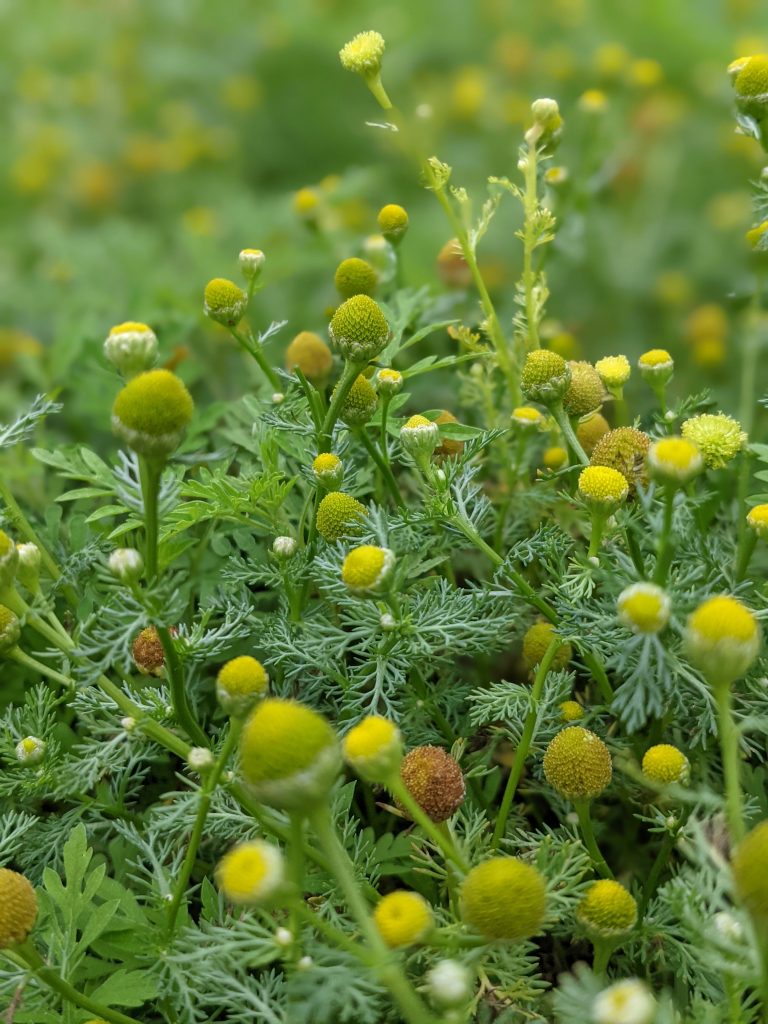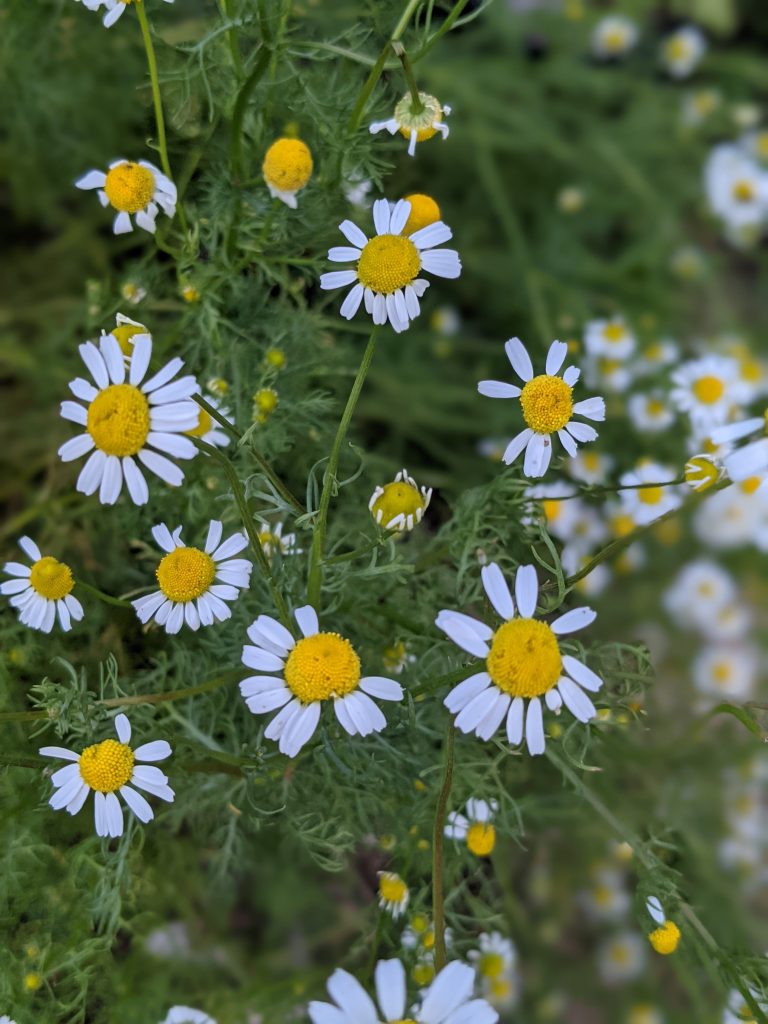Latin Name: Matricania Matricriodes
Family: Asteraceae
For the longest time I struggled to get my Chamomile to grow
It just never seemed to germinate or get past the seedling stage. I really think it was the seed manufacturer because now I can grow it like a champ. At the time I really wanted to just have Chamomile in my cupboard for comforting warming teas over the winter instead of all those teabags you get at the store that had multiple different herbs mixed in. I didn’t want chamomile and lemon, or whatever concoction the tea manufacturers came up with – I just wanted chamomile! (Insert toddler temper tantrum stamping foot).
After speaking with an old friend, about my chamomile woes and lamenting about how I wished I could just have a cup of straight chamomile tea like that delicious cup of tea I was devouring in her little corner of Eden… she laughed at me, and I mean laughed hard… I was mildly embarrassed, but I also knew she is a bit different, and I love her for it. She told me she had a secret; it was not chamomile – it was what she called “Poor Man’s Chamomile” Say what??

She told me it’s called that because “people who couldn’t afford chamomile used it. I’m thinking she’s referring to the depression era, a lot of people learned how to make do with what they had on hand. Smart, I think! We could really learn a lot if we just listen to our elders… Did I mention she is a fantastic storyteller? Either way, my curiosity was peeked, and my research began on this cute little plant.
The cool thing is it grows so well in really crummy areas like roadsides, dirt roads, driveways, dry and sandy soil locations – even between sidewalk cracks!
When the greens are young you can eat them, but once they mature, they become pretty bitter. The flower heads are where the magic is, those you steep to make a tea. A delicious tea I might add, with a hint of pineapple. I have since read you can use it for gastrointestinal upset, infected sores, fevers, and postpartum anemia – but I have no personal experience with that, nor am I a medical professional. I have even heard Native Americans used it for bug repellent… but I must test that yet. I am having a hard time with that one though, as Pineapple weed is an annual plant native to Northeast Asia.

It is such a cool looking plant too! It has feathery leaves that remind me of Dill. The hairless leaves are finely divided into feathery narrow segments that grow alternately along the stem, 1 per node. The yellow/green conical shaped flower heads look a lot like tiny pineapples and are made up of tons of individual blooms that appear to have no petals. They look very similar to Chamomile flowers, but without the white rays. When you crush the leaves or flowers, it smells distinctly like pineapples!
Anyways, if you can’t grow or get your hands on Chamomile itself – now you know a cool alternative! Just pop the heads of the flowers off and dry them on a drying rack (I make my own) or a dehydrator, store in a glass jar in a cool dark place so you can enjoy the deliciousness all year long.
As always… Disclaimer: Do not consume a plant unless you’re 100% sure of the correct ID. When foraging please make sure if you do not own the land, to ask for permission to enter someone’s property before foraging there. Don’t assume it’s unused property!

